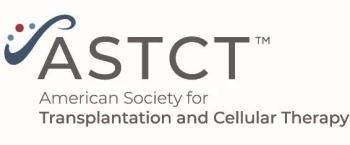
Oncology NEWS International
- Oncology NEWS International Vol 5 No 8
- Volume 5
- Issue 8
Early Combination Treatment May Provide HIV Control
VANCOUVER, BC--Treatment for AIDS is beginning to resemble cancer therapy: Some studies suggest that best results occur when disease burden is reduced early by aggressive use of combination therapy. Previous thinking has been to hold effective antiviral agents in reserve until disease progression.Presentations at the 11th International Conference on AIDS showed that combination treatment, especially with regimens that include one of the new protease inhibitor drugs, can reduce the virus to undetectable levels in the blood. Reduced viral load decreases the risk of disease progression and is often followed by clinical and immunological improvement.Speaking at the meeting, Scott Hammer, MD, of New England Deaconess Hospital, Boston, pointed out that the ability of combination therapy to reduce viral load to undetectable levels means that "eradication of virus has become an acceptable hypothesis to be tested."Researchers at the Aaron Diamond AIDS Research Center are testing that hypothesis using aggressive combination treatment during primary infection.
VANCOUVER, BC--Treatment for AIDS is beginning to resemble cancer therapy: Some studies suggest that best results occur when disease burden is reduced early by aggressive use of combination therapy. Previous thinking has been to hold effective antiviral agents in reserve until disease progression.Presentations at the 11th International Conference on AIDS showed that combination treatment, especially with regimens that include one of the new protease inhibitor drugs, can reduce the virus to undetectable levels in the blood. Reduced viral load decreases the risk of disease progression and is often followed by clinical and immunological improvement.Speaking at the meeting, Scott Hammer, MD, of New England Deaconess Hospital, Boston, pointed out that the ability of combination therapy to reduce viral load to undetectable levels means that "eradication of virus has become an acceptable hypothesis to be tested."Researchers at the Aaron Diamond AIDS Research Center are testing that hypothesis using aggressive combination treatment during primary infection.Martin Markowitz, MD, reported that HIV levels dropped to undetectable levels in 9 of 12 subjects newly infected with HIV and treated with AZT (zidovudine, Retrovir), 3TC (lamivudine, Epivir), and the protease inhibitor ritonavir (Norvir).One other subject received only AZT and 3TC because of an allergic reaction to ritonavir, and three subjects withdrew from the study, one due to adverse events and two due to noncompliance.All of the subjects had plasma viremia as determined by branched DNA assay but were either negative on ELISA testing, had an evolving Western Blot with progression of at least two bands, or had a negative HIV antibody test within 120 days of screening and a clinical history consistent with acute HIV infection. All are homosexual men, and 9 of 12 identified a precise time of infection that preceded the onset of symptoms by about 15 days. Therapy was initiated an average of 65 days after the onset of symptoms."We decided to test this approach in newly infected patients because we would be dealing with homogeneous viruses that we hoped would be susceptible to all of the drugs we were using," Dr. Markowitz said. Viremia dropped to below 500/mL in all compliant subjects, and antibodies against HIV proteins also decreased."Clearly, as we reduce viremia, we are also reducing antigen-stimulation of antibody response. This is what we hoped to see, since we are going for eradication of the pathogen," he said.Nine patients have completed therapy, with follow-up ranging from 4 to 10 months. "As we had hoped, it would appear that we have completely suppressed viral replication, as shown by the fact that we cannot detect plasma RNA nor can we culture virus from peripheral blood mononuclear cells," he said.Dr. Markowitz added that "compared to approximately 30 acute seroconverters from natural history studies, we can say that combination chemotherapy clearly has a profound effect on the natural history of HIV infection."Dr. Markowitz, Dr. David Ho, and their colleagues plan to biopsy lymph nodes and test for virus at 1 year after infection, assuming that there have been consecutive months of undetectable plasma RNA, and to discuss with patients the option of stopping treatment.Similar Results in San FranciscoBradford Saget, PhD, and Steve Scheibel, MD, from San Francisco reported similarly impressive results in six patients infected for less than 6 months. All were treated with a 4- or 5-drug combination of AZT, ddI (didanosine, Videx), ddC (zalcitabine, Hivid), and interferon-alfa, with or without 3TC. Pretreatment HIV plasma RNA levels ranged from 17,000 to 227,000 copies/mL, and absolute CD4 cell counts ranged from 193 to 1,005 cells/mL.All subjects had "a profound decline in HIV plasma RNA levels," Dr. Saget said. Levels fell by a mean of greater than 4.5 log for a mean of 23 weeks. The longest treated subject (106 weeks) had undetectable plasma RNA levels (less than 12 copies/mL) at week 28. A lymph node biopsy at week 78 "revealed normal architecture and no evidence of HIV RNA by in situ hybridization," he said, emphasizing that the results were achieved without the use of a protease inhibitor.These data suggest that early aggressive combination antiviral therapy could ultimately lead to HIV clearance, Dr. Saget said, but he warned of the need to be certain that the "pro-viral DNA" is negative before risking stopping therapy. This is the HIV DNA incorporated into the host cells, which directs the production of more HIV virions.Treatment of patients during initial infection is a "best case" scenario and unlikely to be applicable to many case in the real world. Fortunately, the aggressive combination therapy approach also helps those with established infection.Researchers at the Vancouver meeting reported good results with several different drug combinations. The current favorite two-drug combination appears to be AZT and 3TC. This is because HIV that becomes resistant to 3TC loses its ability to resist AZT, and because AZT has some ability to cross the blood-brain barrier.Andrew Phillips, MD, of the Royal Free Hospital School of Medicine, London, reported that AZT/3TC significantly reduced the risk of progression to AIDS, lowered viral load, and raised CD4 counts, compared to treatment with AZT or 3TC alone. Patients benefited from the combination regardless of whether they had been previously treated with AZT.After 50 weeks of follow-up, Dr. Phillips concluded that a 1-log change in viral load is associated with a sevenfold difference in risk of progression to AIDS.Data from the Delta Virology Group (France, UK, the Netherlands), presented by Dr. F. Brun-Vézinet, showed that either AZT/ddI or AZT/ddC produced greater reductions in viral load than AZT alone. Furthermore, in patients on AZT alone, viral load rose back to baseline values by week 48, while a decrease of at least 0.6 log was maintained in both combination therapy groups. By week 96, this had changed to 0.5 log, the minimum thought to indicate biologically relevant changes in the level of viral replication.Adding a third RT inhibitor is one way around the time-limited impact of two-drug therapy. Julio Montaner, MD, of the Canadian HIV Trials Network, Vancouver, and conference co-chair, reported on behalf of the INCAS study group (Italy, the Netherlands, Canada, and Australia). They found "a very substantial decrease in plasma viral load" with AZT/ddI plus the non-nucleoside RT inhibitor nevirapine (Viramune).At 1 year, the triple-drug regimen produced a 1.5-log decrease in viral load. Patients were relatively healthy at baseline (CD4 200 mL to 600/mL) and had not been previously treated with AZT.About 60% of patients in the INCAS study still have virus reduced below detectable levels (20 copies/mL) after 1 year, as well as "substantial, persistent" improvements in CD4 counts, he said.Protease InhibitorsAnother approach is to attack a different HIV enzyme by adding a protease inhibitor. Joseph Gathe, MD, of the Houston Clinical Research Network, reported that d4T (stavudine, Zerit) plus the protease inhibitor nelfinavir (Vira-cept) produced a 2-log decrease in viral load over 5 months, compared with a 0.9-log decrease for d4T monotherapy.Three fourths of patients completing at least 28 days of therapy had viral loads decrease to below detectable levels, and response was "independent of previous antiretroviral therapy," Dr. Gathe said.A 2-drug regimen would have obvious appeal, but nelfinavir is not yet FDA approved, so some clinicians are opting for a combination of AZT/3TC and either indinavir (Crixivan) or ritonavir (Norvir). The third approved protease, saquinavir (Invirase), appears to be less popular because of low bioavailability.Roy Gulick, MD, of the NYU Medical Center, reported a 2-log drop in viral load sustained for over 2 years in patients given indinavir/AZT/3TC. This study included 97 subjects, aged 18 to 63, with 17% women and 29% nonwhite, he said. The average CD4 count was 140, and all patients had received more than 6 months of prior AZT therapy (average, 2.5 years)."The most important result," Dr. Gulick emphasized, "was that 80% to 90% of these patients with advanced HIV disease who received triple-drug therapy had undetectable levels of virus for up to a year."
Articles in this issue
about 29 years ago
Chemo Improves Pain Relief in Advanced Prostate Cancerabout 29 years ago
NCCR Urges Congress to Support Senate Bill for Cancer Researchabout 29 years ago
Researchers Propose New Treatment Guidelines for HIVabout 29 years ago
Salvage Cryotherapy for Prostate Cancer Studied at M.D. Andersonabout 29 years ago
FNA Dropped From RDOG Study Due To High Rate of Insufficient Samplesabout 29 years ago
New Thinking on HIV Progression Leads to New Strategiesabout 29 years ago
Hospitals Told Not to Capitate for 'Wrong' Reasonsabout 29 years ago
More Study Needed of Possible Carcinogenesis of Winter Gas Additiveabout 29 years ago
President Makes NCAB AppointmentsNewsletter
Stay up to date on recent advances in the multidisciplinary approach to cancer.


















































































